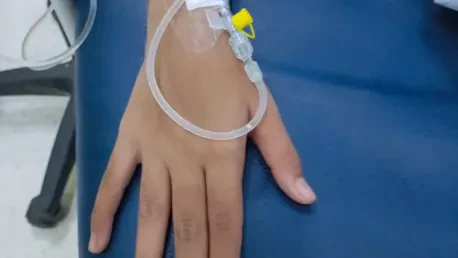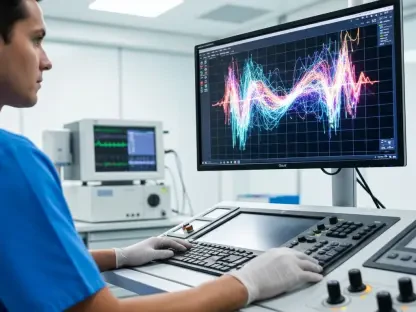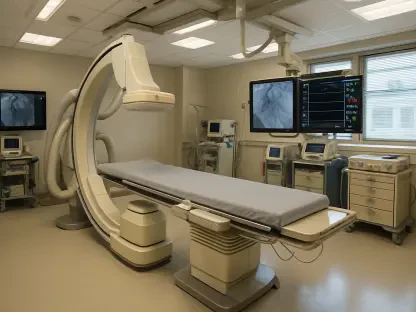In the rapidly advancing field of medical technology, unforeseen challenges occasionally arise, even among industry leaders. James Maitland, an expert in robotics and IoT applications in medicine, brings his deep knowledge to discuss the intricate details of a recent recall by Edwards Lifesciences. Despite the technical nature of the issue, the driving force behind such challenges often reveals a commitment to safety and innovation.
Could you explain the specific issue that led to the recall of the Edwards arterial cannulas?
The recall was prompted by reports of a 3mm to 4mm section of exposed wire in the arterial cannulas, which could potentially lead to serious injuries. Edwards identified this issue and proactively decided to recall the affected devices to prevent any risk to patients.
What are the potential risks associated with the exposed wires in these cannulas?
The exposed wires can create significant risks, such as puncturing the artery, which may lead to bleeding, inadequate blood perfusion, and hemolysis. These potential complications underscore why addressing this issue quickly was crucial to patient safety.
How did Edwards initially become aware of the exposed wire issue in their cannulas?
Edwards began receiving complaints about the exposed wire sections, which they investigated thoroughly. The company detected a small number of occurrences and moved promptly to confirm the problem before it resulted in any procedures or injuries.
Can you tell us more about the models affected by the recall and why these were specifically included?
The recall primarily affected the Optisite Arterial Perfusion cannulas and four models of peripheral femoral arterial cannulas, chosen due to the use of similar components. More than 27,000 units of these products were circulating when the recall was initiated.
What steps has Edwards taken to address the problem and ensure customer safety?
Edwards issued communication to all affected customers, instructing them to remove and return the impacted devices from their inventories. They have also arranged to provide credit for the returned products, ensuring replacements or reimbursements where necessary.
Has there been any feedback or specific complaints from customers regarding these devices before the recall?
Prior to the recall, the company received several complaints about the protruding wires, though thankfully no incidents of injury were reported. This feedback was critical in prompting Edwards to take swift action.
Were any procedures adversely affected before the issue was identified?
Fortunately, the protruding wires were identified before any procedures were performed with the affected cannulas, preventing any adverse effects on patients during surgeries.
What kind of communication has Edwards sent out to its customers regarding this recall?
Edwards wrote to its customers in May, detailing the issue and instructing them on the recall process. The communication emphasized the immediate removal of affected products and the procedure for returning them for credit.
How has the recall impacted Edwards’ operations or financial outlook?
Despite the recall, Edwards’ financial results remained strong, with a reported sales increase of nearly 12% in the second quarter. This has given the company enough confidence to adjust its full-year revenue growth guidance upward.
Were there any challenges faced in executing the recall effectively?
Executing a recall of this magnitude always presents logistical challenges, but Edwards has taken systematic steps to manage the process, ensuring timely communication and coordination with their customer base.
How does Edwards plan to prevent similar issues with their products in the future?
Looking forward, Edwards is likely to enhance their quality control measures and manufacturing processes to prevent similar quality issues, ensuring the robustness of their products through improved oversight and testing protocols.
Could you describe the process customers need to follow to return the affected devices?
Customers have been asked to remove the affected cannulas from their inventory and arrange for a return. Edwards has provided clear instructions on how to execute this process, offering support to facilitate smooth returns.
What compensation or alternatives are being offered to customers who have returned affected devices?
Edwards is offering credit for all recalled devices returned by their customers, which can be used toward alternative products or future purchases, thus delivering value despite the involuntarily disrupted supply.
Are there any similar products in Edwards’ lineup that might also face scrutiny due to this issue?
The focus has primarily been on the affected Optisite models and similar femoral arterial cannulas. While no additional products have been identified, ongoing assessments will determine whether any others require similar attention.
Can you provide insights into the FDA’s involvement and their classification of this recall?
The FDA classified the recall as a Class I notice, signifying the potential for serious adverse health consequences. This classification triggered Edwards to act decisively to mitigate any potential patient risks.
How has the recall affected the trust and relationship between Edwards and its customers?
Maintaining trust is paramount, and while recalls pose challenges, transparency and rapid response from Edwards likely played a vital role in preserving customer relationships and confidence in their commitment to safety.
Have there been any internal investigations or audits following the discovery of the issue?
After identifying the issue, it’s likely Edwards conducted internal investigations to understand the root cause and implemented corrective actions to reinforce product safety and process improvements.
Are there any plans for product improvements or redesigns in response to the recall?
The recall may spur Edwards into further innovation and redesign efforts, ensuring that future iterations of their products surpass existing safety expectations and perhaps even set new industry standards.
Was there any impact on the development, testing, or innovation of new products due to this recall?
With the recall’s extensive logistical demands, some shift in focus might have occurred. However, the company’s growth figures suggest a continued commitment to advancing new products amid addressing the recall.
In light of the recall, what are Edwards’ strategic priorities moving forward?
Edwards is likely emphasizing strengthening quality assurance measures and refining their product lines, while also ensuring that innovation continues to thrive, reinforcing their standing as a leader in the medical device field.









